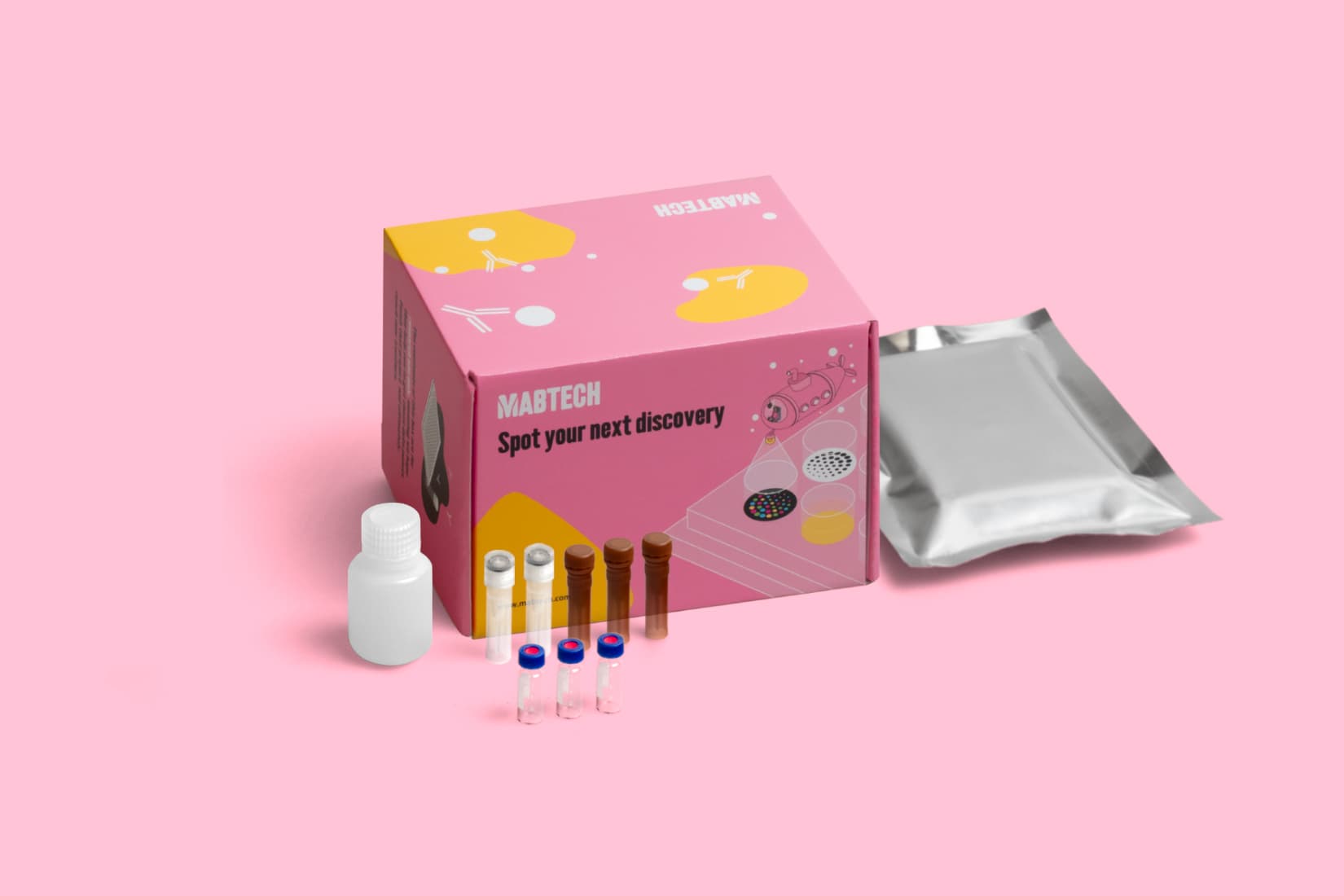FluoroSpot Path: SARS-CoV-2 (Spike+RBD) Human IgG
FluoroSpot Path: SARS-CoV-2 (Spike+RBD) Human IgG
Publications: 0
Documents
Questions?
Paves your way to functional analysis of a specific research question.
Components
| Detection mAb | Anti-IgG mAbs (MT78/145), 550 |
| Fluorophore conjugates | Anti-WASP mAb, 640 |
| Anti-GAL mAb, 490 | |
| Antigens | Spike-GAL |
| RBD-WASP | |
| Stimuli | R848 |
| Recombinant human IL-2 | |
| Plate | Pre-coated FluoroSpot plate (mAbs MT91/145) |
| Buffers/Solutions | FluoroSpot enhancer |
| Reconstitution buffer |
In stock
Delivery 4-9 business days
Shipping $0
Performance
Documents
Tutorials
Product highlights
Publications (0)
Loading publications...
Analyte information
IgG
| Analyte description | Immunoglobulin G (IgG) is the most abundant Ig isotype in serum, making up approximately 80% of all serum immunoglobulins. In humans, there are four subclasses of immunoglobulin G, with the highest serum concentrations of IgG1 followed by IgG2, IgG3, and IgG4. In mice, the IgG subclasses are defined as IgG1, IgG2a/c, IgG2b, and IgG3. The IgG molecule consists of two heavy and two light chains (κ or λ), resulting in a molecule with two arms for antigen binding. High levels of IgG antibodies are induced following the initial IgM response in a typical immune response to antigens. |
| Alternative names | Immunoglobulin G, IgG, IgG3 |
| Cell type | B cell |
| Gene ID | 3500, 3501, 3502 |
